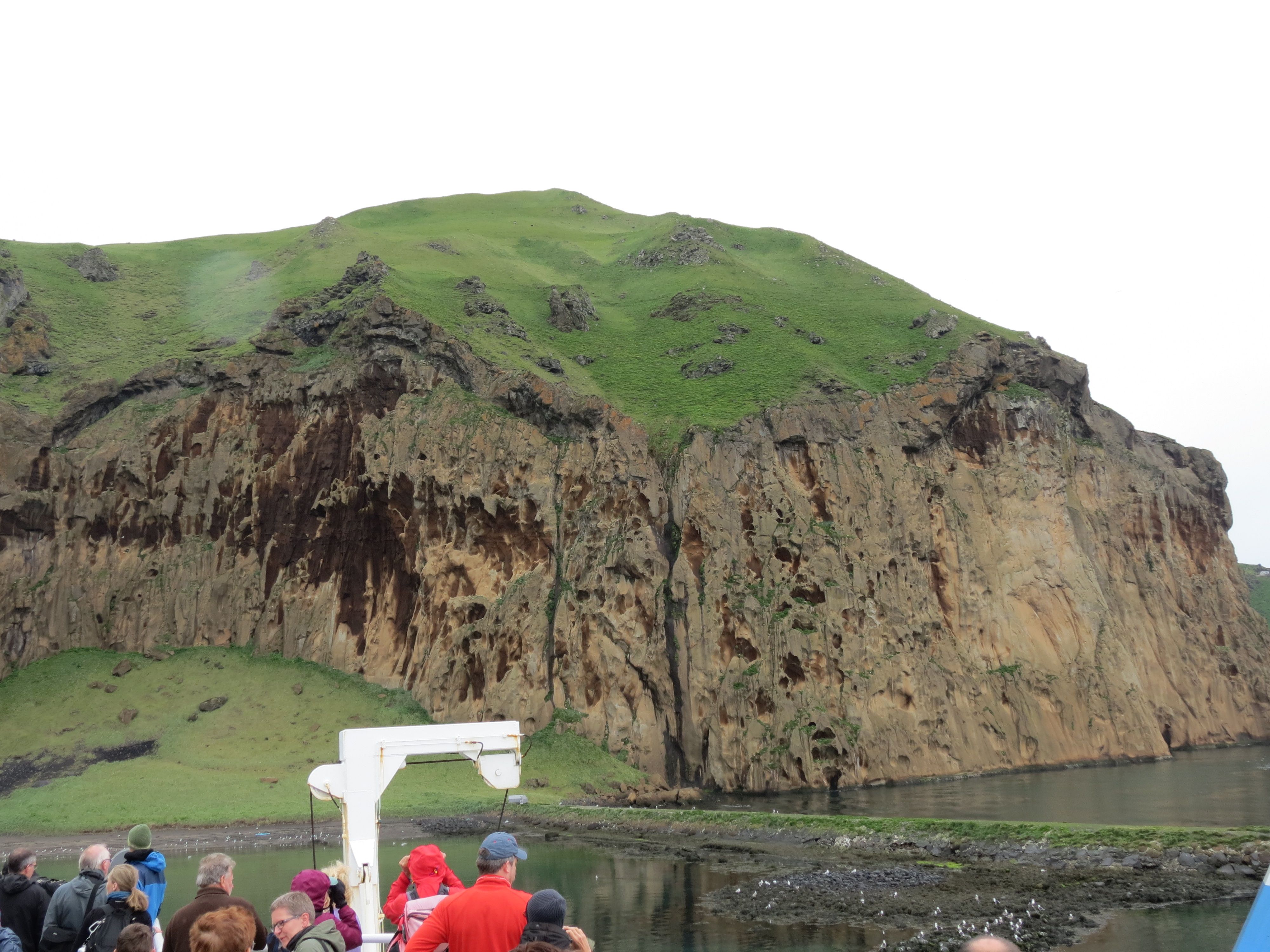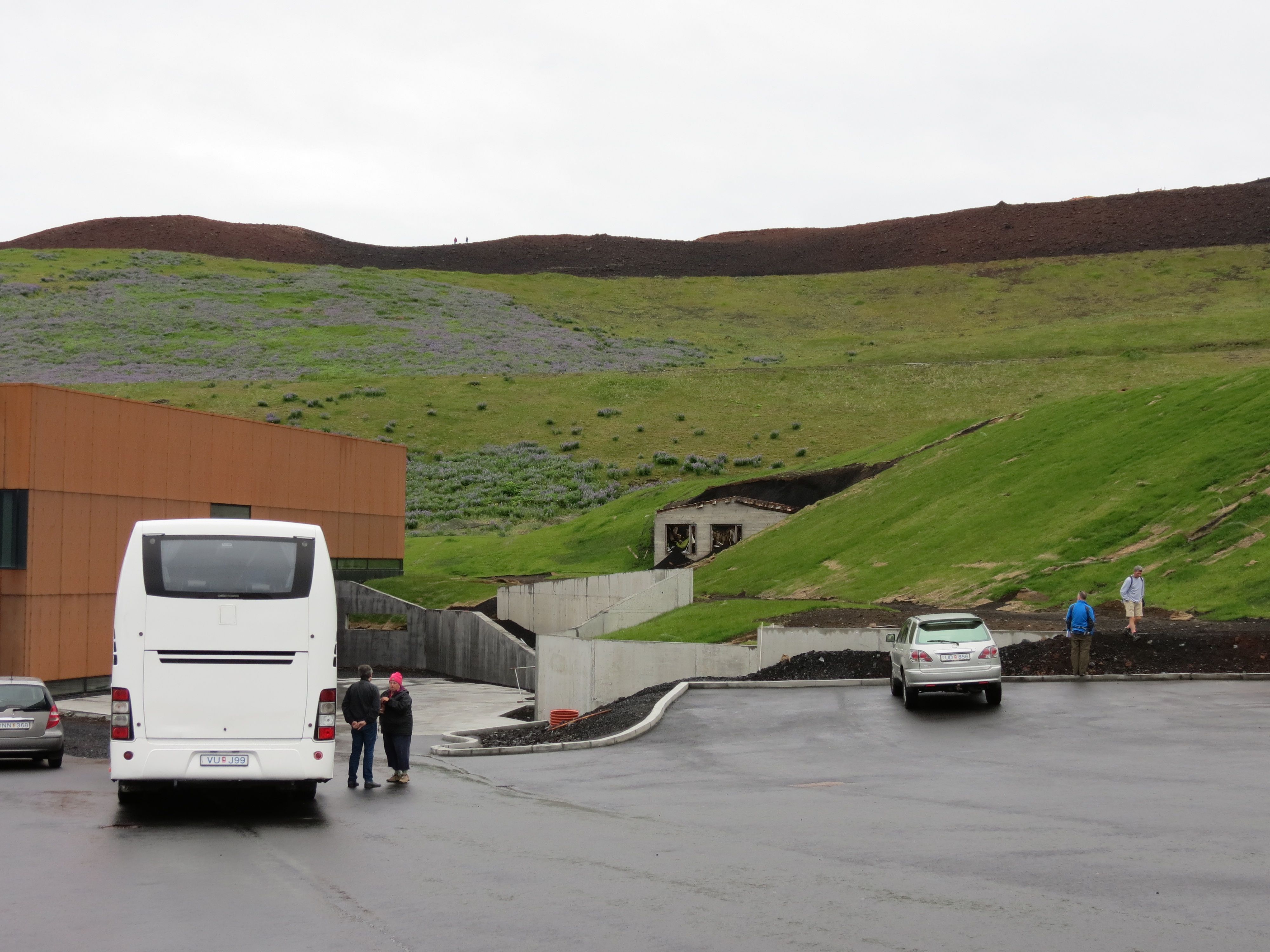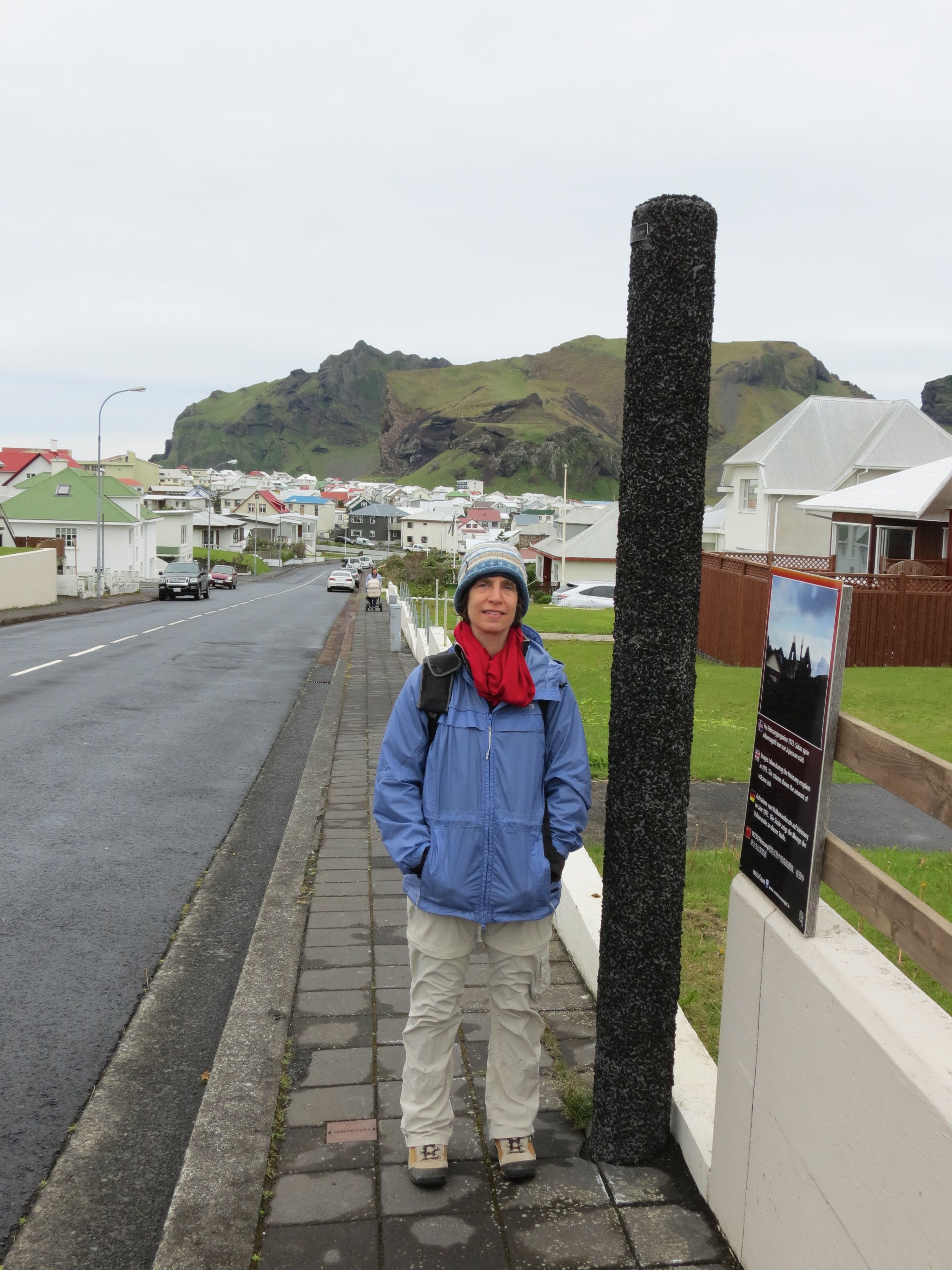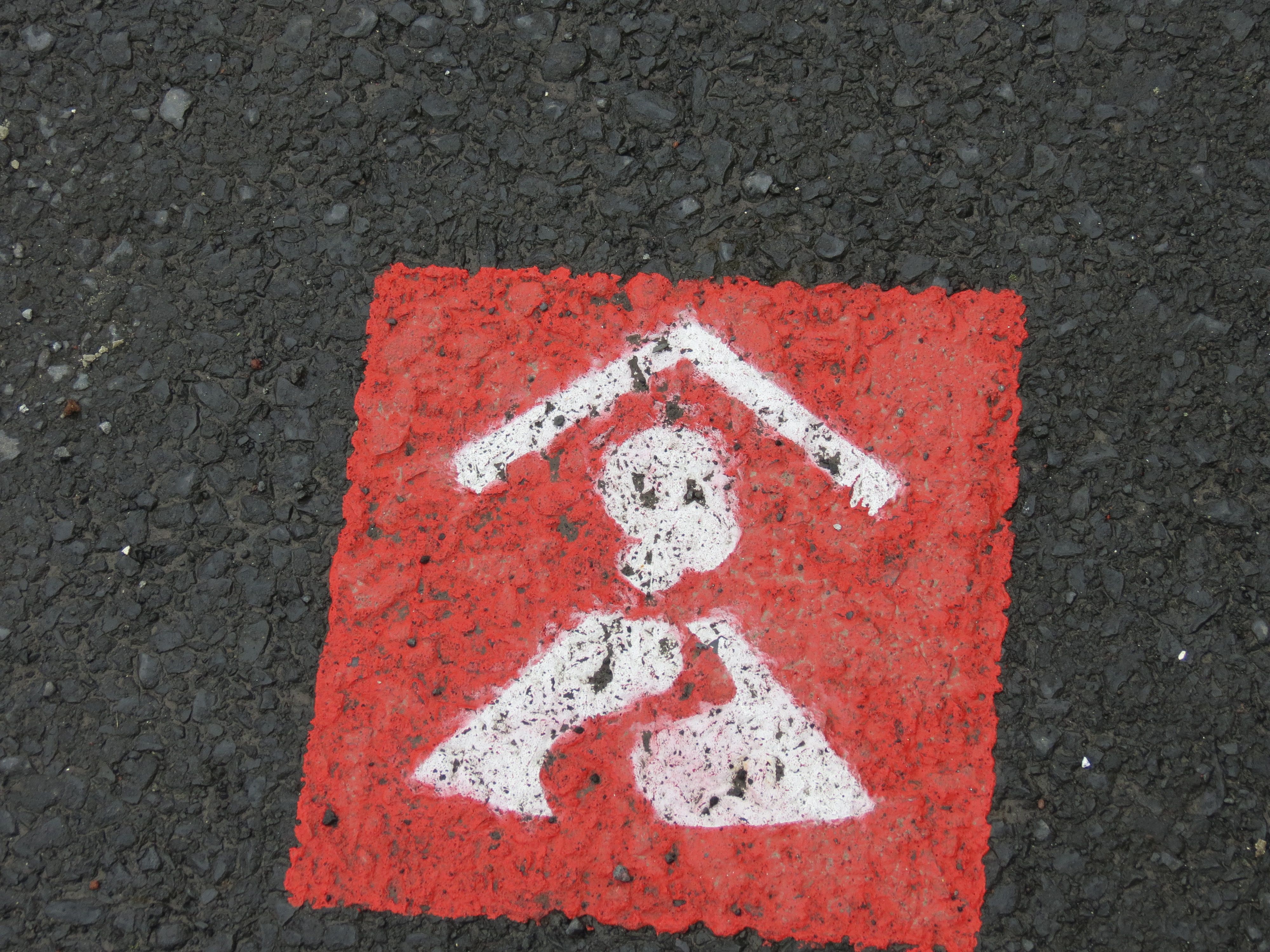
|
–Geoff-Hart.com: Editing, Writing, and Translation —Home —Services —Books —Articles —Resources —Fiction —Contact me —Français |
by Geoff Hart
Previous installment: 29 June, rift valleys, geysirs and horses, oh my!
Today was a tour of Heimae (“home island”), the biggest of a cluster of a dozen or so volcanic islands off the southern coast of Iceland. To get there, we drive about an hour from our hotel, then had a pleasant and uneventful 45-minute ferry ride from the mainland. The highlight of the trip is navigating between sheer rocks walls that line the path into the harbor:

Apart from spectacular soaring vertical scenery, Heimae was and is a key fishing port, and the site of a 1973 volcano eruption that forced the evacuation of the island. Our guide was Alfred (Alfrid?), a jovial man of about 56 who also drove the tour bus over the steep terrain. While driving, he maintained a great line of patter, told a compelling story about all parts of the island, had a keen sense of humor, and had a very welcoming and pleasant demeanor.
He was about 14 when a long rift opened up in the middle of the island and began spewing fire and trying to bury the town with ash, stones, and lava. The citizens were extremely fortunate, as bad weather had kept the fishing fleet in the harbor the previous day and there were enough boats available to get the population off the island in only a few round trips between the island and shore. There ensued a hasty evacuation, with no time to do more than grab the kids and flee for the nearest ship. One family was too large for their car, so they had to drop half of their kids at the port and return for the other half. By the time they returned, the first batch of kids had already been forced onto a boat and shipped to the mainland, and it was several days before they were reunited with the rest of the family. Alfred told us several other stories, of which the most poignant was the farmer who could not free his cows from the barn because of the depth of volcanic debris, and who instead climbed in through a window so he could shoot them rather than leaving them to be smothered or burned alive.
The fissure eruptions eventually ceased and a single main cone emerged and began pouring lava towards the town. The cone quickly grew to the height of the tallest part of the land surrounding Heimae, looming over the town. The volcano produced prodigious amounts of lava. Here’s an example of the middle-to-downhill end of the flow, which is substantially thinner than the upper parts:

As you can see, a shitload of lava got dumped on the town during the several months after the volcano emerged, burying many homes to a considerable depth. (The one in the picture somehow survived the weight of all that lava presumably because the flow solidified fast enough above the house that the solid lava supported the weight of the subsequent layers.) Of course, there was also a ton of ash. Here’s a picture of Shoshanna standing in the middle of the town next to a post that represents the 2.6 m-depth (about 10 feet) of ash that fell on that part of the town:

Both to protect their homes and prevent the lava from flowing into the harbor and ruining one of iceland’s major fishing ports, thereby adding economic disaster on top of the human disaster, local emergency managers decided to try something radical that had never been considered before: they begged, borrowed, and presumably stole every high-volume water pump they could find in the North Atlantic, including many that had been mothballed since World War II by the US military, and spent months pumping icy sea water onto the advancing lava, greatly accelerating the cooling and slowing the lava’s advance. The lava overran much of the town despite their efforts, but they managed to stop the flow just short of the port and to protect many homes that would otherwise have been overrun.
After our formal tour, we had a couple hours on our own. Most of the tour group opted to spend the rest of the afternoon in the eruption museum, as it was cold and windy, but I wanted to wander through town. It’s a very pleasant place, with many tidy little homes and some lovely gardens. The city has made a tremendous effort to clean up after the eruption, and if you ignore the new conical mountain and masses of lava looming over the city, they’ve done a great job. Among other things, they’ve made a huge effort to revegetate the slopes of the volcano (which you can see in the picture of the lower slopes of the flow, earlier in this page), both to hold down the dust and to remove the most overt reminder of the disaster by emphasizing how the city has recovered. However, memories of the eruption are never far from hand, including evacuation route symbols on the sidewalk:

We wandered downhill in search of sustenance, since we’d be returning home well after 8PM and didn’t want to eat that late. By the time we reached the commercial strip, it was right between the lunch and dinner settings, but we found a pleasant local café that was still serving and that offered bottomless bowls of lamb stew and free coffee with the meal. The stew was salty but tasty, perfect for a cold and blustery day, particularly when washed down with a Gull beer. Afterwards, we had a nice wander through the port, passing a gull rookery on the side of one of the rocks flanking the cliff and peering in at one of the local fish factories ("Langa" corporation, if memory serves). As I noted in a previous installment in the blog, most of the cod heads are exported to Africa. Here, we learned from a PR billboard outside the factory that Nigeria is their primary export market, and that as a public service, they supported a program to prevent blindness among villagers near their target markets.
Another uneventful ferry ride to the mainland, then about an hour’s drive home, where we fell into bed exhausted. All this fresh sub-arctic air is exhausing!
Next installment: 1 July in Landmannalaugar
©2004–2024 Geoffrey Hart. All rights reserved.